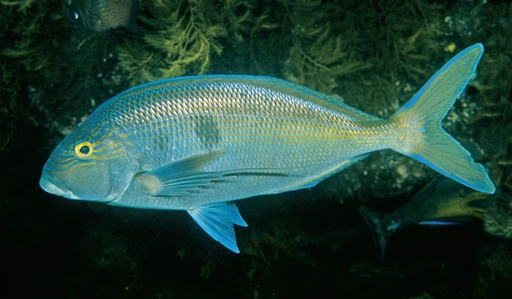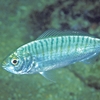General Description
Body robust, compressed, with a slender tail base, thick lips, and pectoral fins with lower rays thickened, the uppermost thickened ray noticeably extended. Adults dark blue above, paler below, with wavy yellow and blue lines radiating from the eye, a faint dark blotch just below centre of lateral line; dorsal, anal and tail with yellow spots or wavy lines. Juveniles with alternating yellow and blue lines on body and more distinct lateral blotch. To 1 m.
Biology
This species is fished commercially and is good eating.
Habitat
Temperate waters, usually on deeper coastal reefs, in depths of 5-240 m.
Reefs
Distribution guide
Eastern and southern Australia.
Species Group
Depth
Shallow (1-30 m)
Deep ( > 30 m)
Water Column
Max Size
1 m
Commercial Species
Yes
Global Dispersal
Native to Australia
Conservation Status
- DSE Advisory List : Not listed
- EPBC Act 1999 : Not listed
- IUCN Red List : Not listed





